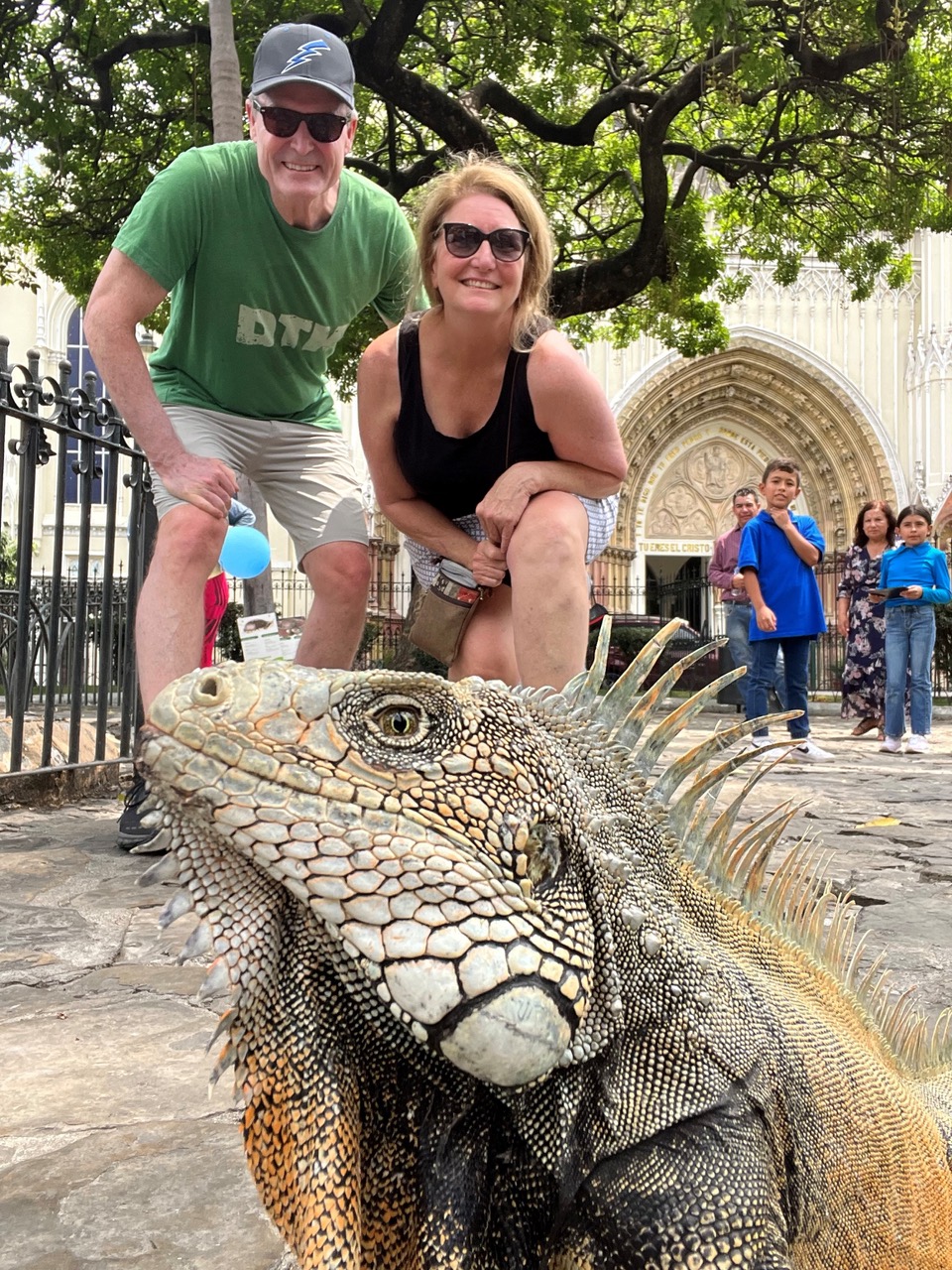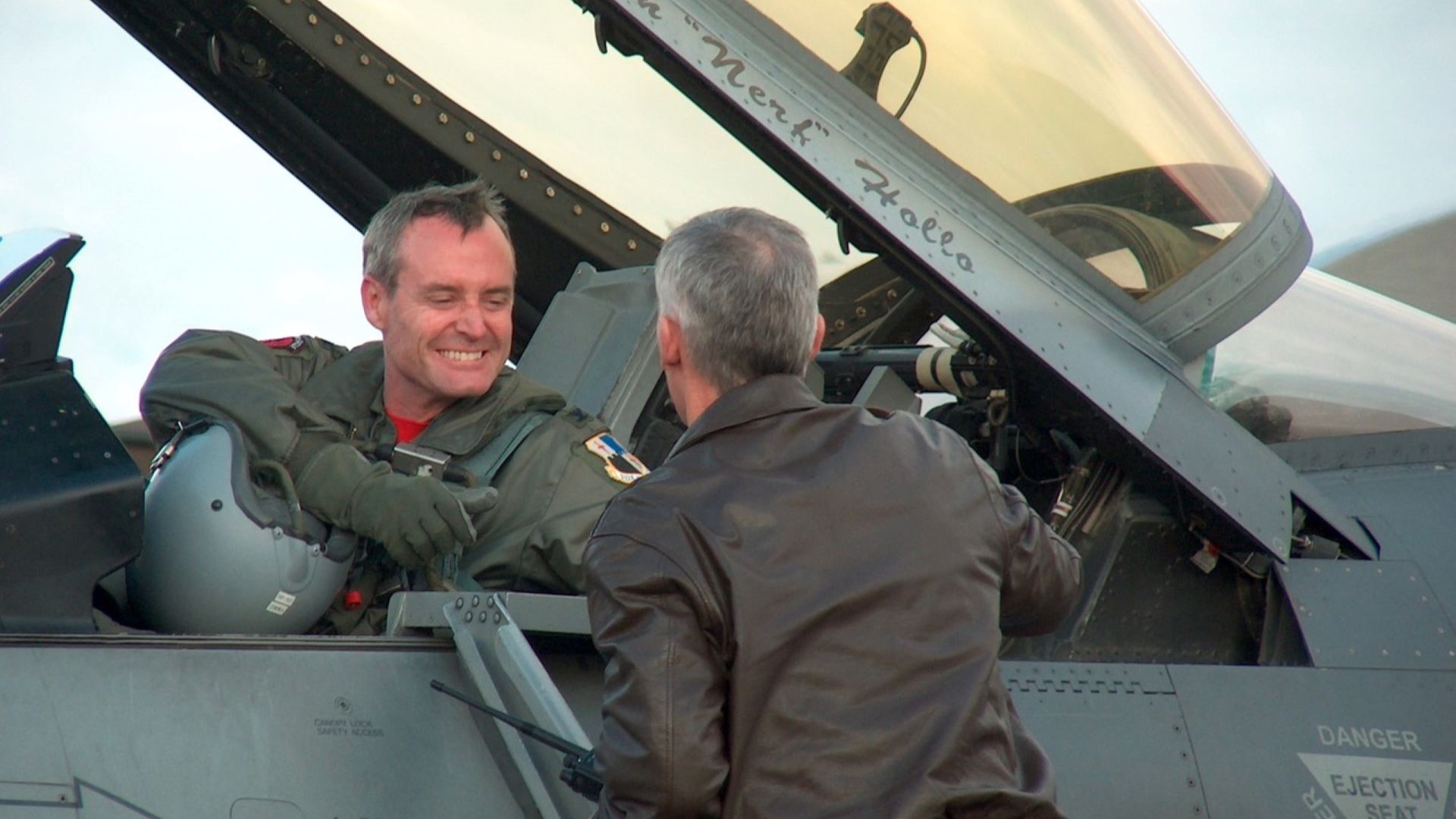Smooth Landing: An Ace F-16 Pilot Finds a Second Calling at GE Aerospace
June 10, 2024 | by Chris Noon
Lieutenant General Darryl Roberson owes his life to safe, reliable jet engines. While performing in the early 1990s with the Thunderbirds, the air demonstration squadron of the United States Air Force (USAF), the ace fighter pilot was preparing for the signature finale known as the “bomb burst.” As Roberson’s fighter arced back to complete its thrilling intersection with three other jets, a strong gust of wind blew him off course. The seasoned airman had just a split second to adjust.
“I was coming back at over a thousand miles per hour of closure speed, and was trying to make up wind drift,” he remembers. The Thunderbirds usually whizzed past each other with around 50 feet of clear sky between them. “When I finally looked up, there was about five feet between us.” Roberson closed his eyes. He had altered course just in time.
“When I needed it, those engines were there for me,” says Roberson, who flew combat missions in Iraq in both 1991 and 2003, as well as in Afghanistan in 2012. “I’ve been shot at plenty of times, so it’s not just something to say.” Indeed, being able to depend on an engine to keep you safe when in harm’s way is not something Roberson takes lightly. He still extols the brawn of GE Aerospace’s F110 engine in the small, light, and ultra-nimble F-16 fighter. The F110 sported the “Big Mouth” inlet, allowing for extra airflow. “It gave you what any fighter pilot wants: more power,” he says.
Now Roberson’s paying it back. He’s just about to finish his second year as an executive director for military customer engagement at GE Aerospace in Washington, D.C. Every day he finds himself explaining to decision-makers at the U.S. Department of Defense (DoD) how GE Aerospace’s jet engine technology, such as the revolutionary XA100, can help warfighters prevail in “the moment of truth.”
“Those are moments when you’re ‘pulling Gs,’ and asking the airplane to give you everything that it can, because you need it to either employ your weapons or to survive,” he says. “I know how these engines can make the difference.”
From Cockpit to Boardroom
Numbers help to tell the story of Roberson’s golden flying career. He racked up more than 5,400 flight hours for the USAF, including 869 combat hours. As a command pilot, he flew the F-4, F-15, F-16, and F-22 aircraft. He received nearly 40 major awards and decorations, including the Distinguished Flying Cross.
But in 2015 he stepped out of the cockpit and immediately began passing on his knowledge to a whole new generation of fighter pilots, overseeing Air Education and Training Command at the USAF’s Joint Base San Antonio–Randolph, in Texas. It was a formidable responsibility: The command operates nearly 1,400 aircraft and trains approximately 300,000 students per year.

Two years later, he retired from the USAF and took a senior role in government relations at a large defense contractor. It was a smooth transition, he says. “I knew I could use my experience to try to help in the corporate world.”
Roberson wasn’t looking for a new job when GE Aerospace approached him in 2022, but a couple of things swung it for him. First, the company offered him his dream role. “They wanted me to come help specifically with fighter engines, which was my passion,” he says. (His previous role involved several other aircraft systems.) Second: heritage. “GE Aerospace is this iconic American company that has given us so much, and I wanted to be a part of it.”
Understanding the Value of the XA100
A typical day for Roberson is spent in the Pentagon, the headquarters of the DoD in Arlington, Virginia, which lies just across the Potomac River from GE Aerospace’s offices in D.C. He doesn’t see himself as a salesman; rather, he’s a kind of go-between for two vital American institutions. “I’m the honest broker, the liaison who shares GE Aerospace’s important information with the DoD and articulates their desires and demands back to GE Aerospace’s leadership.”
Take the XA100 engine. If Roberson has an audience with a Pentagon decision-maker, he starts by telling them how leading-edge jet engines give the U.S. an “asymmetric advantage” over its adversaries. He’ll go on to explain the adaptive cycle capabilities of the XA100, which allow pilots to alternate between maximum power and high-efficiency modes, vastly boosting their mission capability. “This XA100 engine is ready to go forward and make a difference, not only for current aircraft but future aircraft,” he says.
He knows this firsthand because he’s watched engineers push the XA100 to its limits in testing. (“It’s stunning, absolutely phenomenal,” he says.) The engine’s special capabilities — such as increased range, acceleration, and thermal management — deserve a platform, says the decorated pilot. “We’ve more than proven that in the test cell, so we’re continuing to push the value of the engine,” he explains. Fortunately, the test cell is not just a proving ground, but a center of learning. “Even if the XA100 itself does not transfer to a platform, we’re bridging its technology to the latest sixth-generation concepts,” he says.
A Veteran’s Veteran
Roberson still flies on the weekends. “Flying’s always going to be a part of me until I can’t do it anymore,” he says. “I’m one of those guys who’s happy in a Piper Cub.” He’s part of a nonprofit that uses crack military veterans to carry out humanitarian missions, such as ferrying medical supplies and personnel to disaster zones. He’s flown doctors to crises in Haiti, and once brought thousands of diapers to hurricane-hit North Carolina. “A very different payload,” he concedes.

He’s also active in GE Aerospace’s vibrant Veterans Network. “It’s not just a way for veterans to cherish our memories, but to continue to evolve our relationships with folks who’ve all done what we’ve done,” he says.
“I’m proud that I was able to support our country in three different wars,” he adds. “But it was U.S. taxpayers who paid for me to be trained, qualified, and ready.” It’s why he remembers his Thunderbird days as an important act of public service rather than high-octane entertainment. “I was showcasing the American airpower that they’ve paid for,” he says.





